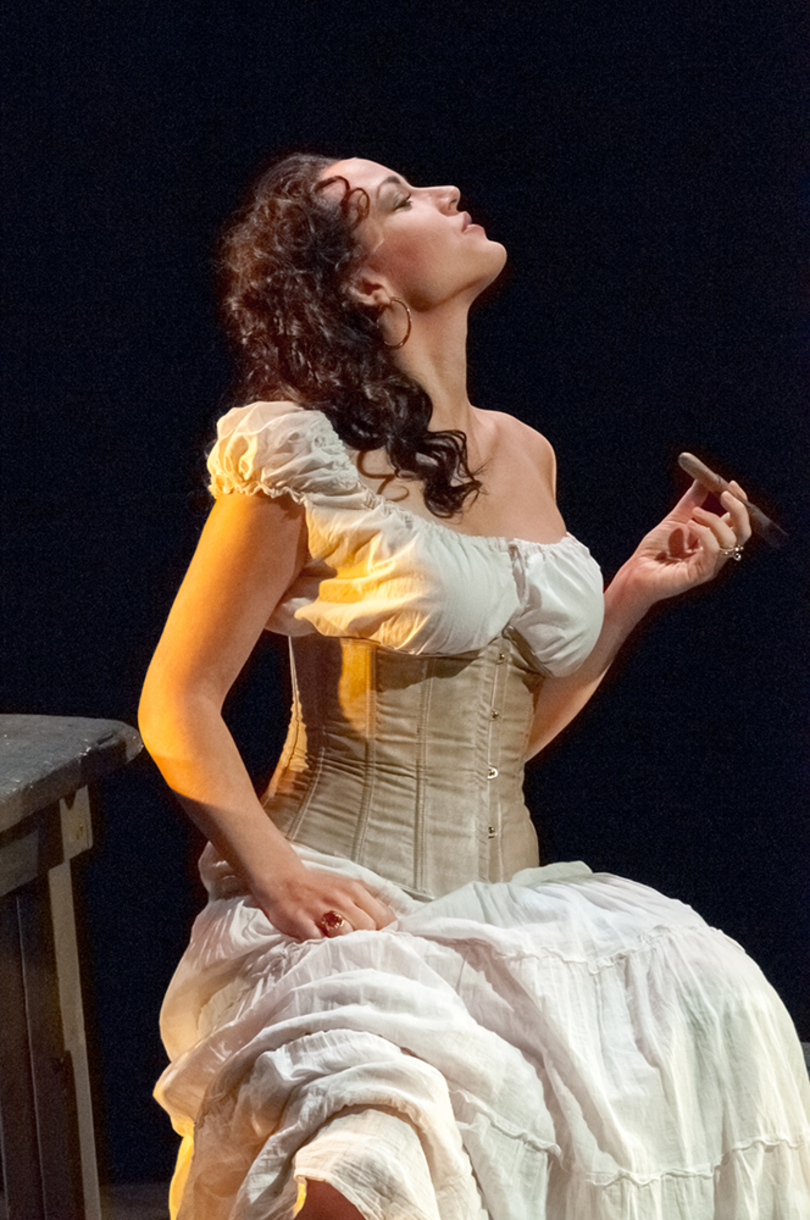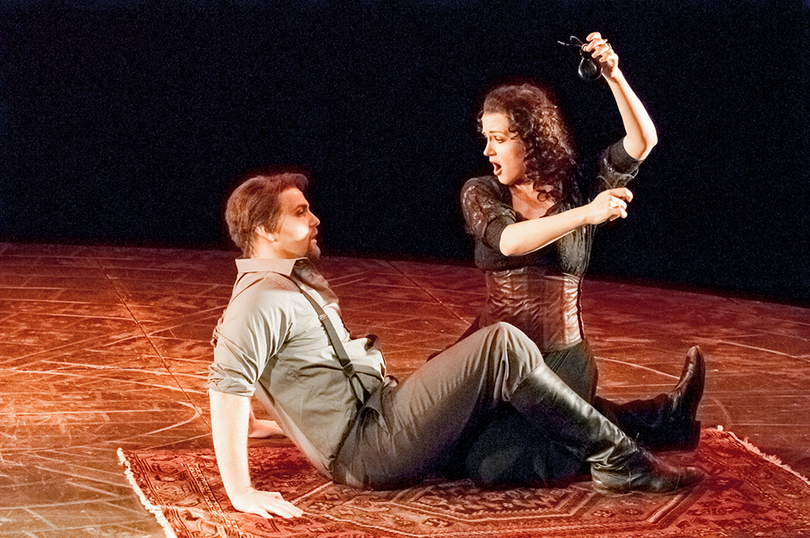Stripped down: Condensed adaptation of classic tragedy ‘Carmen’ brings heat, passion to stage
Opera isn’t exactly known for its sexiness, but “Carmen” definitely brings the heat.
Syracuse Opera opened its 2013-2014 season with “The Tragedy of Carmen,” a stripped-down Peter Brook adaptation of Georges Bizet’s 1875 opera about a promiscuous, free-spirited Gypsy named Carmen. Performances are at 8 p.m. on Friday and 2 p.m. on Sunday at the Carrier Theater. Tickets are $19-81.
Carmen (Ola Rafalo) seduces the naïve soldier Don José (Brent Reilly Turner), who is, at the same time, being pursued by the innocent Micaëla (Colleen Daly). Tragedy strikes when Carmen refuses to give her affections exclusively to Don José and instead sleeps with the bullfighter Escamillo (Wes Mason). These four characters all struggle with fate, love and jealousy. And in true tragic fashion, most of them meet their doom by the time the curtain falls.
“Carmen” was written during the Victorian era, when women were beginning to explore their sexuality and men were hell bent on discouraging such behavior. Sex and relationships were about male dominance and control, even ownership. Also, syphilis struck fear in the hearts of any man who enjoyed the services of a courtesan. In the 19th century, the disease was incurable, widespread and inevitably led to insanity and death.
All of these factors contributed to the spirit of the times when “Carmen” was written. Although the story has been deemed by feminists as an example of a strong woman expressing her uninhibited sexuality, Bizet was sending a clear message that does not at all adhere to feminist ideals: If you’re a woman and you sleep around, you will die an awful death.
The version of this tragedy put on by Syracuse Opera cuts the original opera almost in half, down to just 80 minutes with no intermission. This offers a perfect introduction to opera for those who may need to ease into that realm of art.
The opera is sung in French, but Syracuse Opera projects English translations above the stage to help audience members follow along. This helpful tool should serve as a guide, though, not a distraction. The captions are most effective if glanced at rather than read word-for-word.
This production’s stage design is quite stark, a huge deviation from the intricate sets that dress the stage in the original “Carmen.” The simplified set consists of a wooden oval structure slanted downstage, representing a bullfighting ring, which matches the other stripped-down qualities of Brook’s adaptation. The simple lighting and costumes are just enough to put the audience in the world of “Carmen” without distracting from the best part of the production: the cast members’ vocal performances.
Daly, a soprano, sings with a heartbreaking purity that fits Micaëla’s innocence. Although the timbre of her voice is absolutely delightful, her dynamic control is what really takes her performance to a memorable level. She sings with the soft desperation one would expect from an innocent woman in love, but in the next line she is filling the Carrier Theater with her rich voice.
Rafalo, a mezzo-soprano, has a voice that takes some getting used to after the classic, clear perfection of Daly’s voice. Rafalo’s voice has a richness all its own, with a tone that compels the listener to pay close attention to her. Her voice suits Carmen perfectly; it is full, sultry and quite abnormal in the most compelling way.
Turner, who is making his debut as a tenor after a career as a baritone, transitions into this new range seamlessly. He, above all others, knows how to break a listener’s heart. At the most intense moments, his voice cracks with emotion. Although Don José is a bit of a dope, the character is relatable because of Turner’s performance.
And then there is Mason, whose baritone performance offers the necessary sex appeal for Escamillo. His deep, dominating voice is sure to send shivers down the spines of female audience members, which is only fair, considering the seductive nature of Rafalo’s performance.
And Rafalo certainly knows how to be sexy. Her dances lead from the hip, and she is often seen sitting with her legs spread apart, her dress draping between them to maintain some level of secrecy. Her performance is tasteful by today’s standards, but in 1875, Carmen was positively scandalous.
Between the rich history and sociological implications, the accessible music and the sex appeal, not to mention the brevity of this production, “The Tragedy of Carmen” offers an ideal starting place for anyone new to opera.
Published on October 16, 2013 at 12:28 am
Contact Jessica: jmcabe@syr.edu | @Jessica_Cabe







